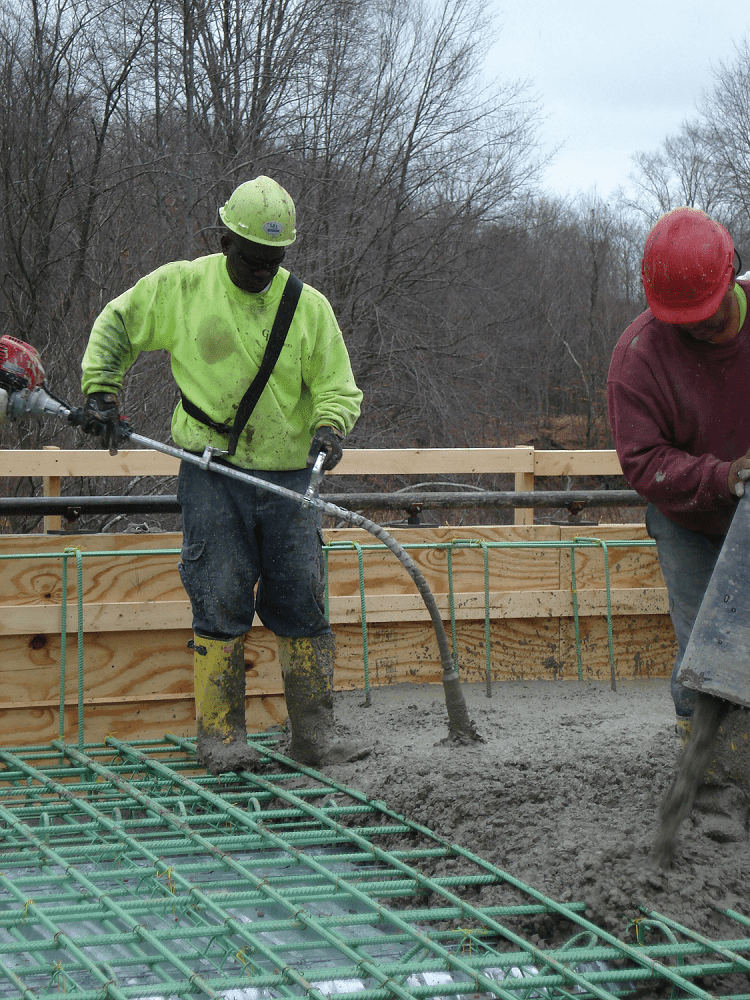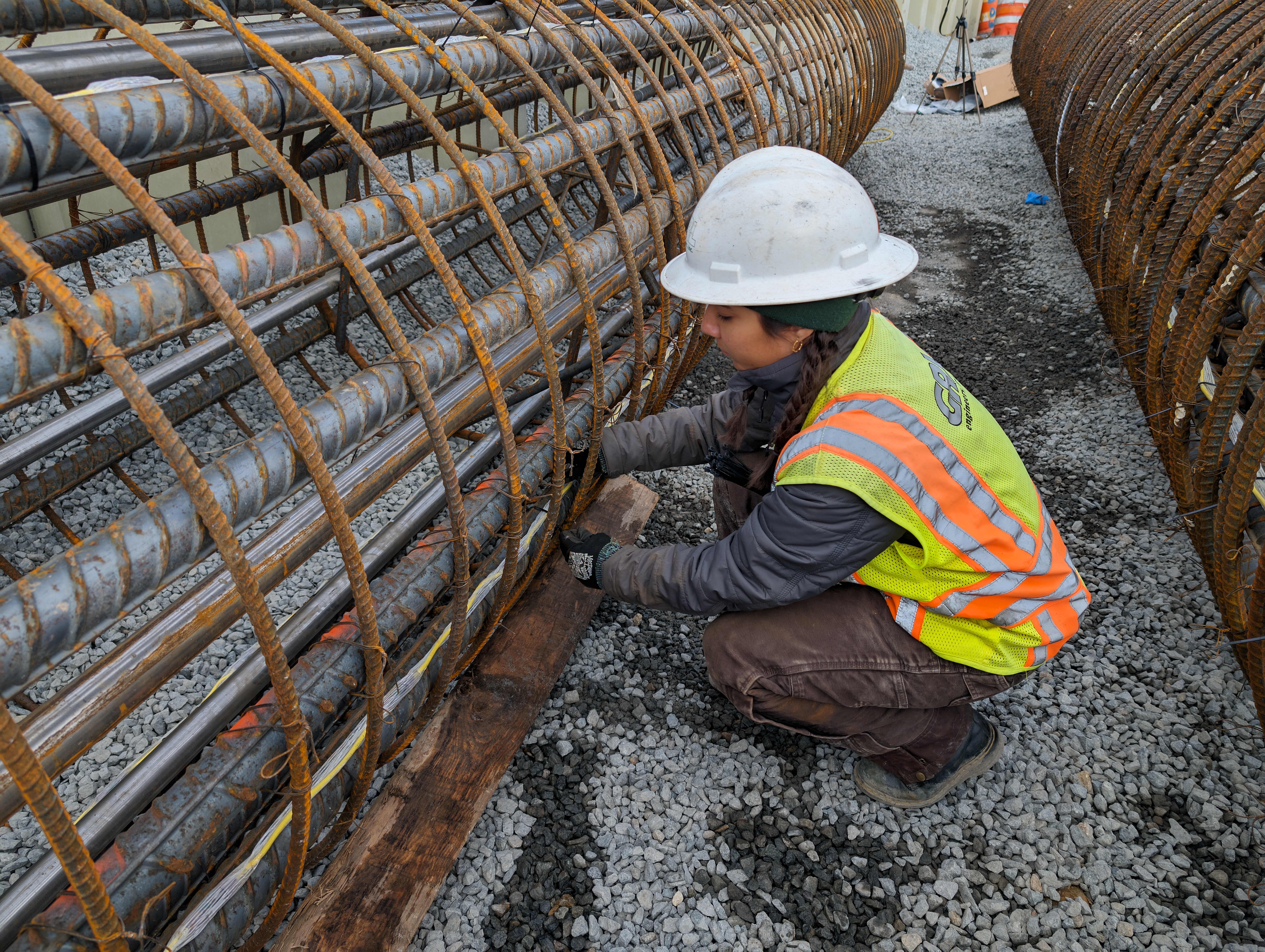The Essential Duty of Concrete Foundation in Structural Stability and Long Life
When it involves constructing a residential property, the foundation is much more vital than you could assume. Concrete structures give unparalleled strength and resilience, ensuring your structure can endure different environmental challenges. Without a solid base, you risk potential issues like shifting or cracking, which can compromise safety and security and worth. Recognizing the subtleties of concrete foundations can be the trick to protecting your investment for years to come. What should you take into consideration following?
Comprehending the Value of Concrete Foundations
Concrete structures are important to the overall stability of any kind of framework, as they offer the important assistance needed to withstand numerous tons and environmental problems. When you consider constructing a home or an industrial space, the structure is the very first thing you must think about. It serves as an obstacle against moisture, shielding your home from water damages. A well-placed concrete foundation also stops settling and shifting, which can bring about fractures in wall surfaces and floors. You'll intend to guarantee that the structure is properly made and enhanced, as this affects the long life of your building. Furthermore, a solid structure can enhance power performance by minimizing air leakages. Keep in mind, neglecting the relevance of a concrete foundation can cause costly repair services down the line. So, purchasing a high quality structure upfront is essential for the stability and durability of your structure.
Benefits of Concrete Foundations for Architectural Honesty
While numerous aspects add to a building's structural honesty, concrete structures offer unrivaled toughness and stamina. You'll appreciate that concrete can endure severe climate condition, standing up to both moisture and temperature level variations. This resilience means your structure is much less most likely to experience cracking or shifting gradually, which can jeopardize its safety.Additionally, concrete's integral weight supplies a strong base, stopping movement during all-natural occasions like quakes or floods. When you pick a concrete foundation, you're likewise choosing reduced upkeep; unlike timber, it will not rot or bring in parasites, conserving you money and time in repairs.Moreover, concrete's fire resistance supplies added safety, ensuring your structure can sustain heats without substantial damages. Generally, buying a concrete foundation means you're prioritizing the lasting security and stability of your building, making it a wise choice for any kind of building and construction job.
Typical Types of Concrete Foundations
When it comes to constructing structures, comprehending the common kinds of concrete foundations can help you make informed selections for your task. The most common types consist of slab-on-grade, crawl area, and full cellar foundations.A slab-on-grade structure is a straightforward, cost-efficient choice, where a thick concrete slab is put directly on the ground. This kind works well in cozy environments, as it reduces warmth loss.Crawl area foundations boost the home somewhat over ground, enabling ventilation and accessibility to plumbing and electric systems. This design can aid avoid moisture issues.Full basement structures provide added living or storage area while giving exceptional structural assistance. They require even more excavation and are generally made use of in colder environments to stop frost heave.
Variables to Consider When Creating a Concrete Foundation

Best Practices for Putting Up Concrete Foundations
When you're setting up a concrete structure, proper site prep work is important to assure stability (West Coast General Engineering industrial concrete Rancho Cucamonga). You'll also need to recognize reinforcement methods to improve toughness and toughness. Finally, don't neglect the healing process, as it plays an essential function in attaining a strong foundation
Website Prep Work Significance
It might seem simple, proper site preparation is vital for guaranteeing a strong and resilient concrete foundation. Beginning by getting rid of the location of any type of debris, vegetation, or organic product that could compromise the structure's honesty. Next, assess the soil type and compaction; you might need to excavate or add materials to develop a secure base. Level the ground to guarantee even weight distribution and avoid resolving problems later on. Setting up proper drain systems is additionally important to protect against water buildup, which can deteriorate the foundation with time. Ultimately, mark out the structure's dimensions properly to assist the pouring procedure. By complying with these actions, you'll establish the phase for a successful concrete structure that stands the examination of time.
Reinforcement Techniques Explained
Once the site is correctly prepared, the following step in assuring a sturdy concrete structure entails executing efficient reinforcement methods. You should start by making use of steel rebar, which supplies tensile strength and helps protect against fracturing. Lay the rebar in a grid pattern, making sure it rises making use of spacers to maintain proper protection. In addition, consider using cable mesh for additional assistance, specifically in locations subject to heavy loads. Don't fail to remember to connect the rebar junctions firmly with cord. For larger foundations, fiber reinforcement can improve durability, decreasing the danger of contraction splits. Constantly adhere to neighborhood building ordinance and guidelines to guarantee compliance. By applying these reinforcement techniques, you'll substantially enhance your structure's toughness and long life, laying a strong foundation for your framework.
Curing Refine Essentials
To guarantee your concrete structure treatments effectively, it is necessary to maintain adequate moisture and temperature conditions instantly after pouring. Start by covering the surface with a damp cloth or plastic sheet to grey stamped concrete preserve dampness. This maintains the concrete hydrated, stopping splits and making certain stamina. You ought to also monitor the temperature; ideal healing problems are between 50 ° F and 90 ° F. If it's too warm, haze the surface on a regular basis to avoid fast evaporation. For cool weather condition, think about using shielding coverings to keep heat. Goal for a treating period of at the very least 7 days, as this is crucial for optimum stamina development. By adhering to these ideal methods, you'll enhance your foundation's natural stone stamped concrete longevity and durability, guaranteeing structural stability for years ahead.
Maintenance of Concrete Structures for Durability
To maintain your concrete foundation solid and long lasting, regular examinations are vital. You should additionally ensure effective water drainage services remain in place to stop water damages. If you spot any type of cracks, resolving them quickly will save you from bigger problems down the line.

Normal Examinations and Analyses
While normal evaluations and evaluations might appear like a duty, they're necessary for preserving the stability of your concrete foundation. By routinely checking for cracks, shifts, or indicators of wear, you can capture potential problems before they intensify into expensive fixings. Look for any type of water merging around the foundation or unusual settling, as these can signify underlying troubles. It's likewise important to keep an eye on any adjustments in your home's structure, like doors that stick or windows that do not open efficiently. Keeping a document of your inspections assists track adjustments in time, enabling aggressive maintenance. Inevitably, these evaluations assure your structure remains steady, supporting the durability and safety and security of your entire framework. Don't ignore this vital facet of homeownership!
Efficient Water Drainage Solutions
Regular examinations can reveal problems like water drainage issues that could compromise your concrete foundation's security. To prevent water build-up, assure your go to my blog gutters and downspouts straight water far from the foundation. Installing French drains can successfully reroute surface and groundwater, lowering pressure on your foundation walls. In addition, rating the soil around your home assists assure that water moves away, as opposed to pooling near your foundation.Consider utilizing sump pumps in locations vulnerable to flooding, as they actively eliminate excess water. Frequently examine for obstructions in drainage systems and clear them quickly. You'll secure your structure's honesty and longevity by taking these proactive steps. Keep in mind, reliable water drainage solutions are vital for preserving a solid, sturdy concrete foundation.
Prompt Crack Repair Works
When you discover fractures in your concrete structure, resolving them without delay is essential for maintaining its durability. Little fractures can swiftly progress right into bigger problems, jeopardizing the architectural honesty of your home. Regularly inspect your foundation for indicators of damages, such as straight or upright fractures. If you find any, don't wait-- repair them immediately. You can use epoxy shots or concrete patching substances, which work for securing fractures. Always comply with the supplier's guidelines and take into consideration getting in touch with a specialist for considerable damages. Keep in mind, timely repair work not only boost your structure's sturdiness however also conserve you cash in the long run by avoiding much more extensive fixings down the line. Remain positive, and your foundation will certainly stay strong and secure.
Attending To Common Concerns With Concrete Structures
Concrete foundations can deal with various concerns gradually, making it important to determine and address them without delay. One of the most usual issues is fracturing, which can happen due to temperature level changes or settling dirt. If you observe cracks, it's vital to evaluate their dimension and depth; tiny cracks can usually be sealed, while bigger ones may need professional evaluation.Water breach is an additional significant worry. Excess moisture can cause mold development and structural damage. Assurance correct drain around your structure to reduce this danger. In addition, search for indications of changing or bowing walls, as this can show underlying issues with your structure's stability.Regular inspections are essential to catch these troubles early. If you detect any concerning indications, don't wait to consult a foundation professional. By staying positive, you can keep the honesty and long life of your concrete foundation, guaranteeing your home remains safe and protected.
Often Asked Concerns
Exactly How Does Dirt Kind Impact Concrete Structure Efficiency?
Soil type considerably impacts concrete foundation performance. If you've got extensive clay, for example, it can cause shifting and breaking. Sandy soil might lead to settling. Understanding your dirt aids assure a steady structure.
Can Concrete Foundations Be Repaired if Damaged?
Yes, you can repair broken concrete structures. Relying on the degree of the damage, techniques like epoxy shot or piece jacking can bring back stability. It's best to consult a professional for effective solutions.
What Is the Typical Life-span of a Concrete Structure?
A concrete foundation usually lasts 30 to 100 years, depending on factors like dirt conditions, climate, and upkeep. You'll intend to keep an eye on it to assure it stays in great form throughout its life-span.
Are There Alternative Products to Concrete for Foundations?
Yes, there are options to concrete for structures, like steel, lumber, and even recycled products. Each choice has distinct advantages and disadvantages, so you should consider your task's certain needs when picking the best material.
Just How Does Climate Impact Concrete Structure Toughness?
Climate substantially affects concrete foundation longevity (West Coast General Engineering Concrete). Extreme temperature levels, wetness, and freeze-thaw cycles can weaken the product, leading to fractures and architectural problems. You need to think about neighborhood climate problems when planning your foundation to assure long-term efficiency
Comments on “How to Pick the Right Mix for Longevity with West Coast General Engineering Concrete”